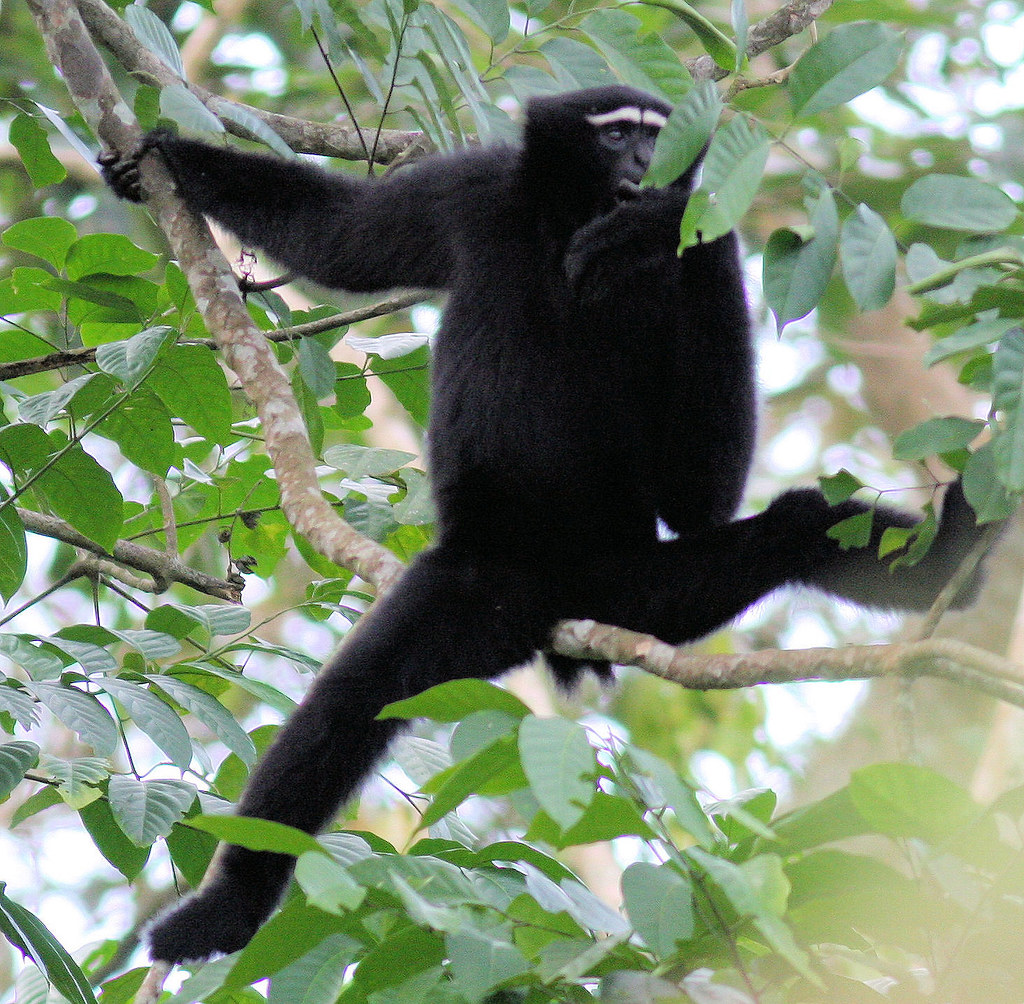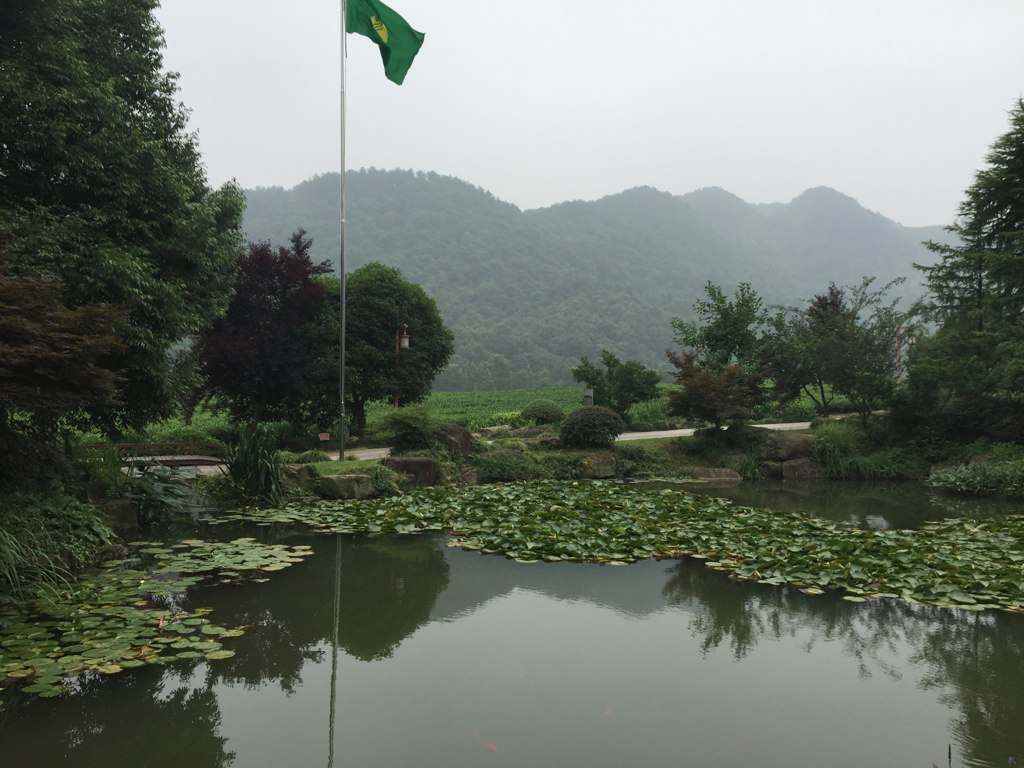If it were Only One, how could there be a Part Two? I discarded that paradox and decided to plow forward anyway. The premise, to recap, was rather simple. I typed the exact phrase “The only one in [name of a country]” into various Internet search engines and observed the results.
Part 2 focused on a set of major countries that would be large enough to generate interesting superlatives even though they had smaller Twelve Mile Circle audiences than the previous exercise. I also confronted the distinct possibility that the chosen topic interested me more than other 12MC readers. Well, that’s at least according to reactions to my previous effort that reminded me of crickets chirping. That never stopped me before so I ignored obvious signs and continued with my little game.
The only wildlife sanctuary designated specifically for the only ape native to India

Only one ape (superfamily Hominoidea) inhabited India natively, the Hoolock Gibbon. Well, except for 1.25 billion humans I supposed. However, I set that little inconvenience aside and focused on the gibbons anyway.
Hoolock gibbons ranged from northeast India into nearby neighboring areas of Bangladesh and China. They hadn’t fared particularly well in modern times due to deforestation and general loss of habitat. The World Wildlife Fund noted that “populations of western hoolock gibbons have declined by almost 90% over the last 30 years, and it is now considered to be one of the most endangered 25 primate species in the world.” So in response the Indian government created the Hoollongapar Gibbon Wildlife Sanctuary in Jorhat district as part of an effort the protect the species as well as other rare primates located within a 21 square kilometre (8 square mile) domain (map).
“Hoollongapar Sanctuary contains India’s only ape family – the Hoolock Gibbon, numbering about 106. Other primates in the sanctuary include the Stump-tailed Macaque (Henduri Bandor in Assamese) which are some 233 in number, the Pig-tailed Macaque which are left with a population of 75 only, the Capped Langur with just 162, 174 Rhesus Macaques, and the Slow Loris (Lajuki Bandor) whose estimation is yet to be made.”
The numbers didn’t look promising although maybe this could be an important step towards preserving the species.
The only French settlement in New Zealand

I hadn’t realized that France coveted the islands that became New Zealand. On the other hand, I probably shouldn’t have been surprised. Every European power sought to colonize every far-flung corner of the world during that period. The French sent ships to the South Island to establish a whaling station there in 1840 at Akaroa.
However the English had already claimed the area a year earlier. Obviously that created a bit of a problem for French territorial aspirations. The British dispatched their ship the Britomart to Akaroa to confirm their sovereignty while the French continued to occupy their whaling port.
Oddly enough the two managed to coexist peacefully. Over time French settlers began to acculturate to British rule and became fully absorbed within the local English populace. Few remnants of the French settlement remained although it certainly left its mark on local street names (map), many of which are still in the French language.
The only place in Russia with geysers

I wasn’t sure what impressed me more, that the Valley of Geysers on Russia’s Kamchatka Peninsula were the only significant geysers in Eurasia or that they weren’t discovered until 1941. Yes, the area was so remote that this spectacular geological formation escaped notice until recent times. Even then, they weren’t fully explored until the 1970’s and opened to foreign visitors only in the 1990’s. Tourists hoping to experience the hundred-or-so remaining geysers needed to arrive by helicopter.
Kikhpinych, a quite active stratovolcano, generated tremendous heat that fed geothermal waters pushing from cracks in the ground (map). This dynamic nature continues to scar the landscape. It created a large landslide in 2007 that covered about half of the original geysers. Then another landslide took place in 2014. Even so, scientists and tourists continued to flock to the valley in spite of possible dangers.
The only tea museum in China

With the well-worn cliché “all the tea in China” could it be possible that there was only one tea museum in China? Apparently that was the case and it was located in Hangzhou in the Zhejiang province (map).
The China National Tea Museum featured an interesting construction technique. It incorporated open walled buildings commingling with the natural flora of the surrounding countryside. Visitors can walk fluidly amongst several open structures while appreciating the history, culture, varietals, production and preparation of tea. Around them grow rows of Longjing (Dragon Well) tea plants, one of the most well-regarded of Chinese green teas.
The only natural arch with flowing river in France

Only one place in France had a natural stone arch formed by a river, with the river still flowing through it. This was the magnificent Pont d’Arc above the Ardèche River, a tributary of the Rhône in southern France (map). The natural beauty of the area attracted numerous tourists. Many of them chose to canoe or kayak along gently flowing waters through the 30 km (19 mi) Ardèche Gorges. The river cut deeply through surrounding limestone, with the highlight being Pont d’Arc. There it bored a tunnel directly through rock.

Leave a Reply